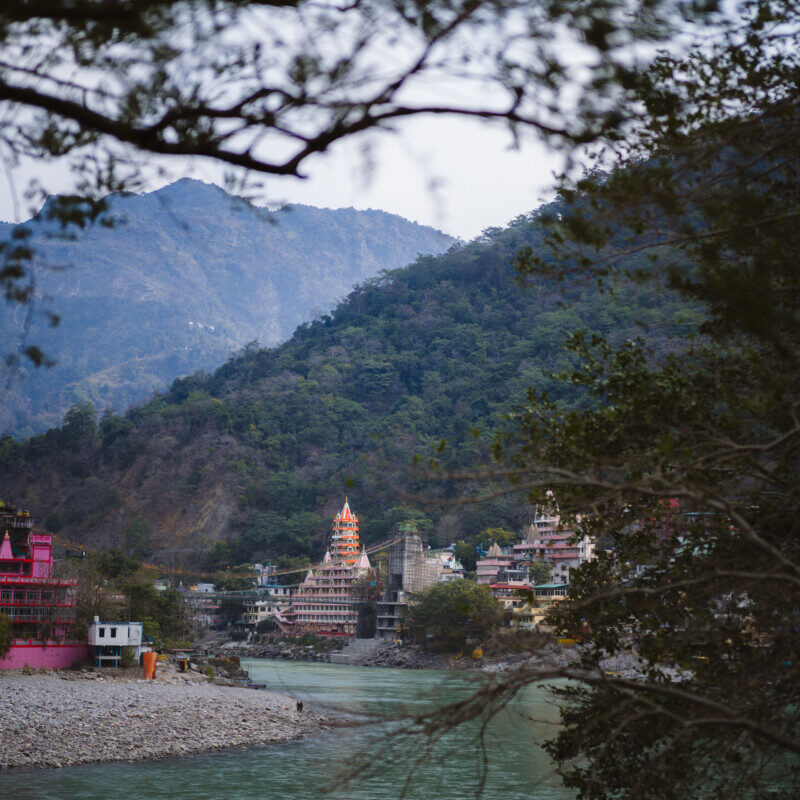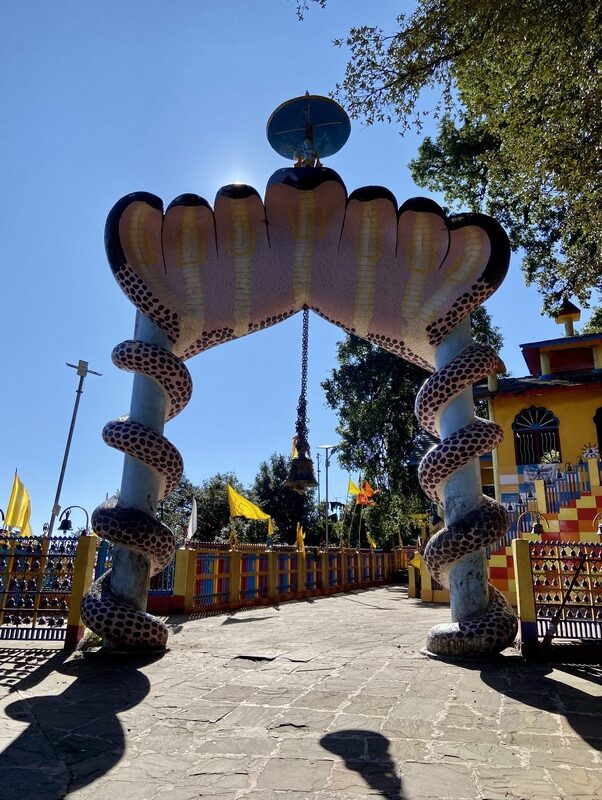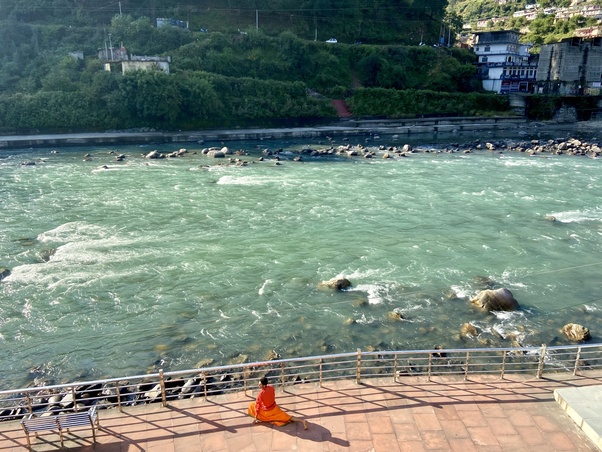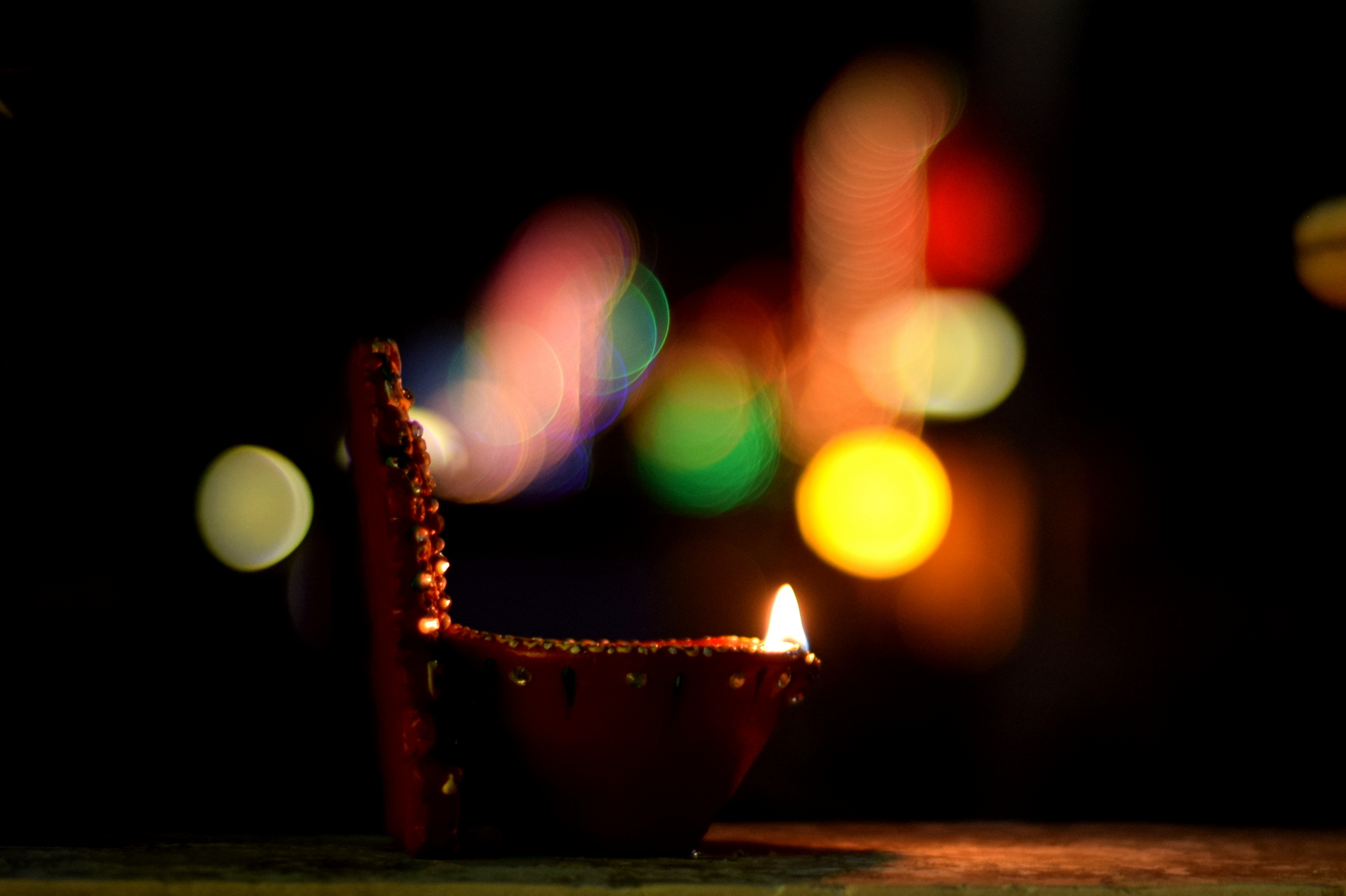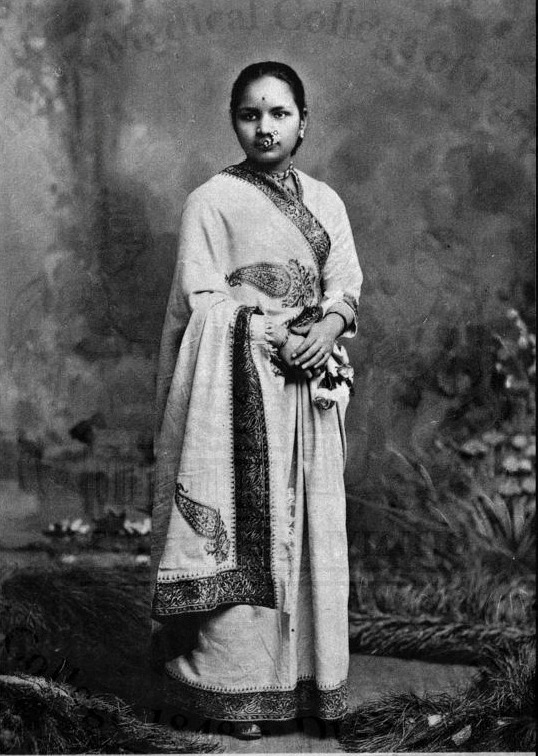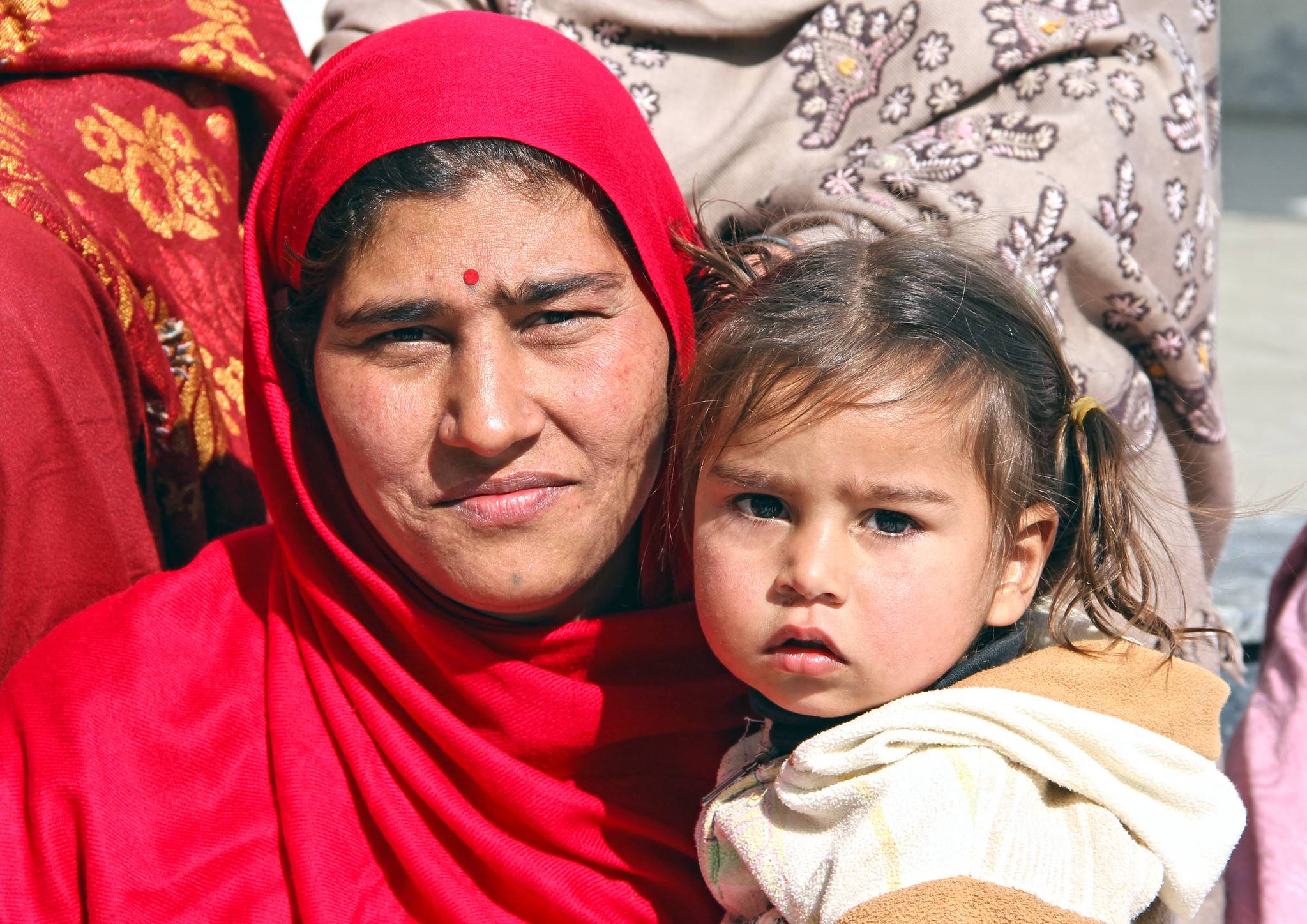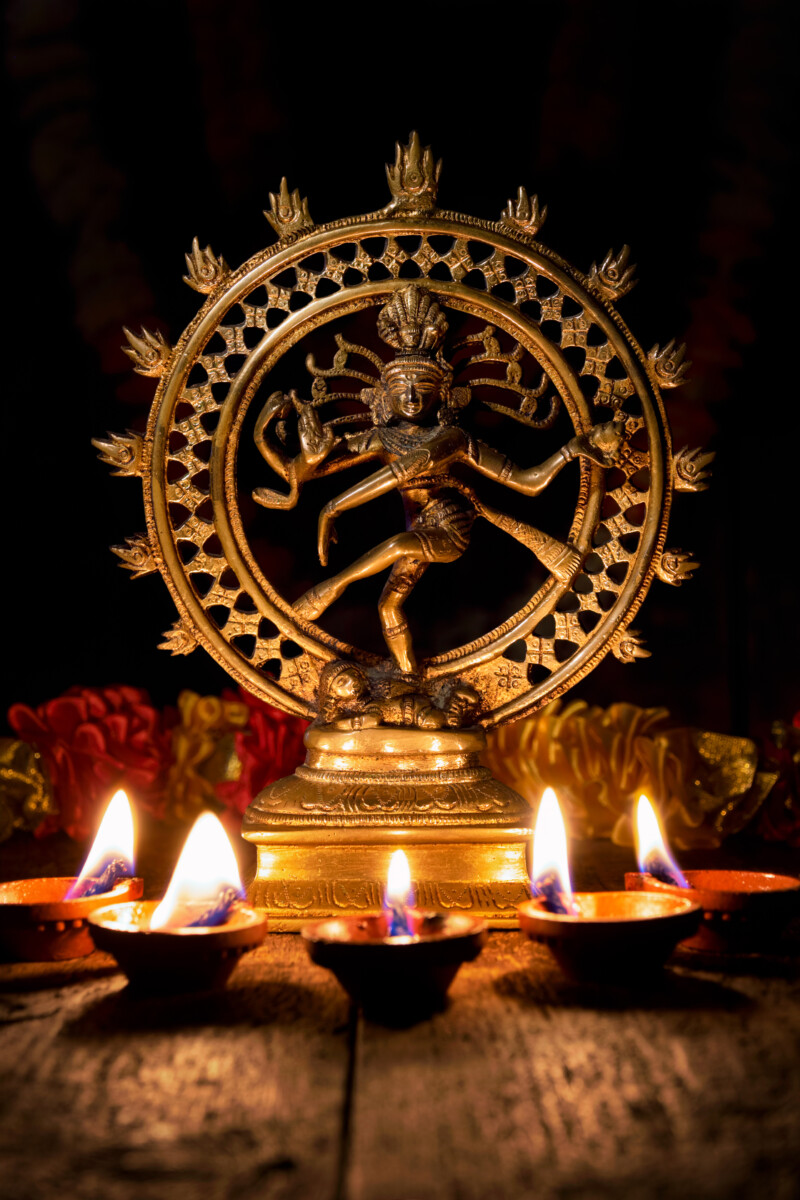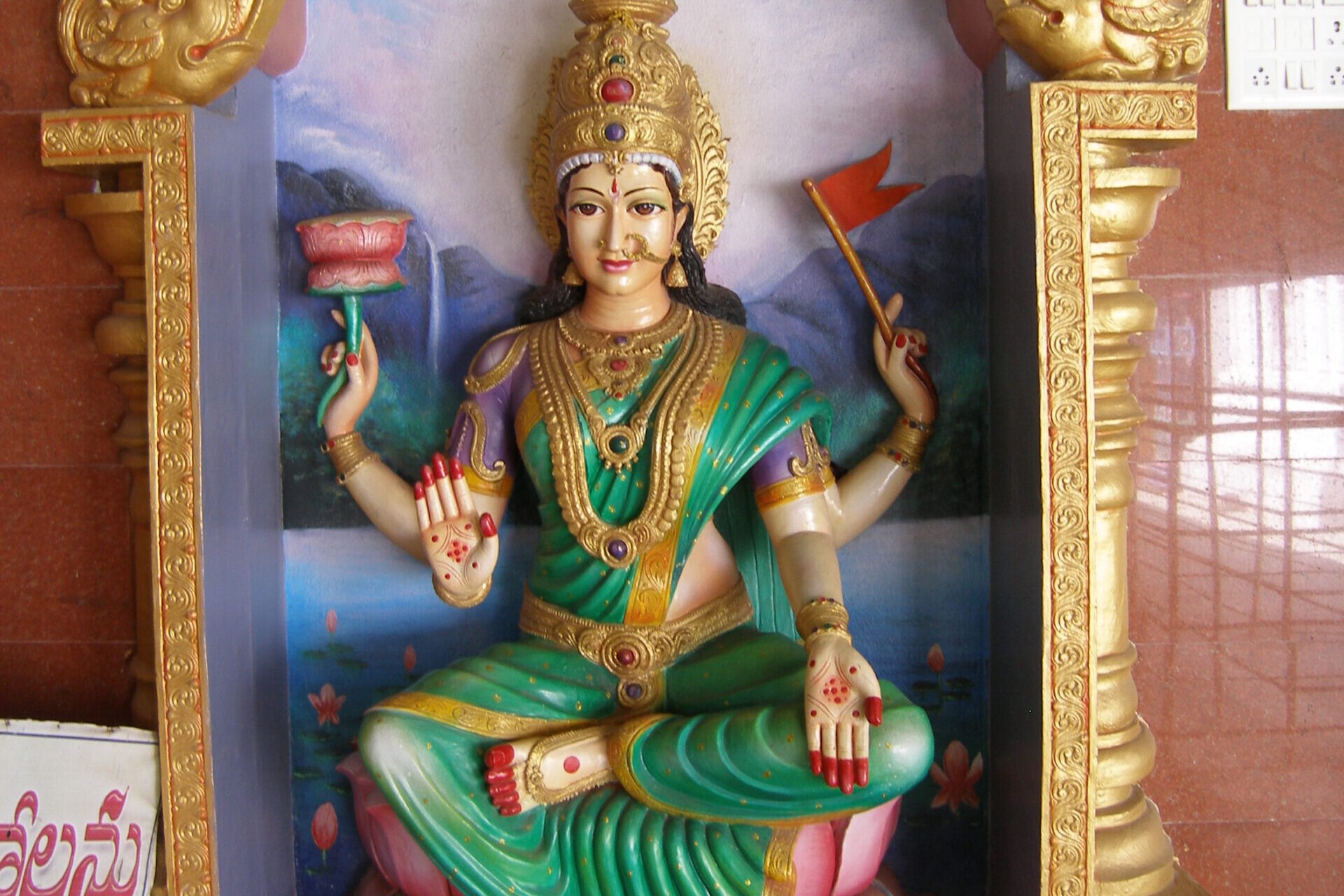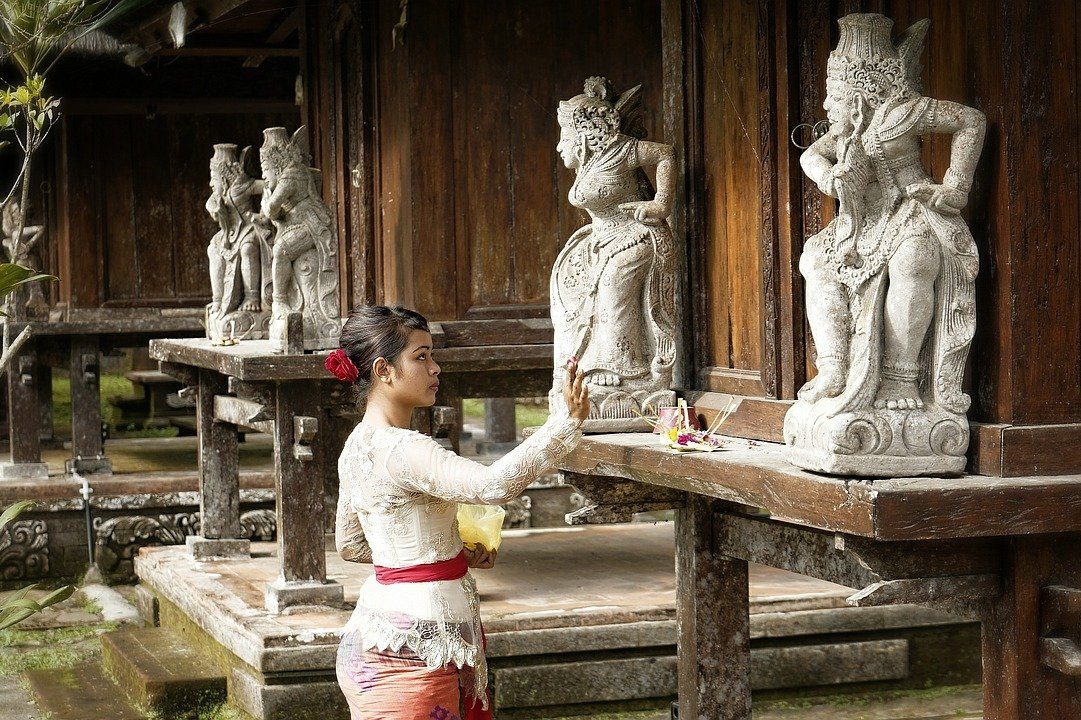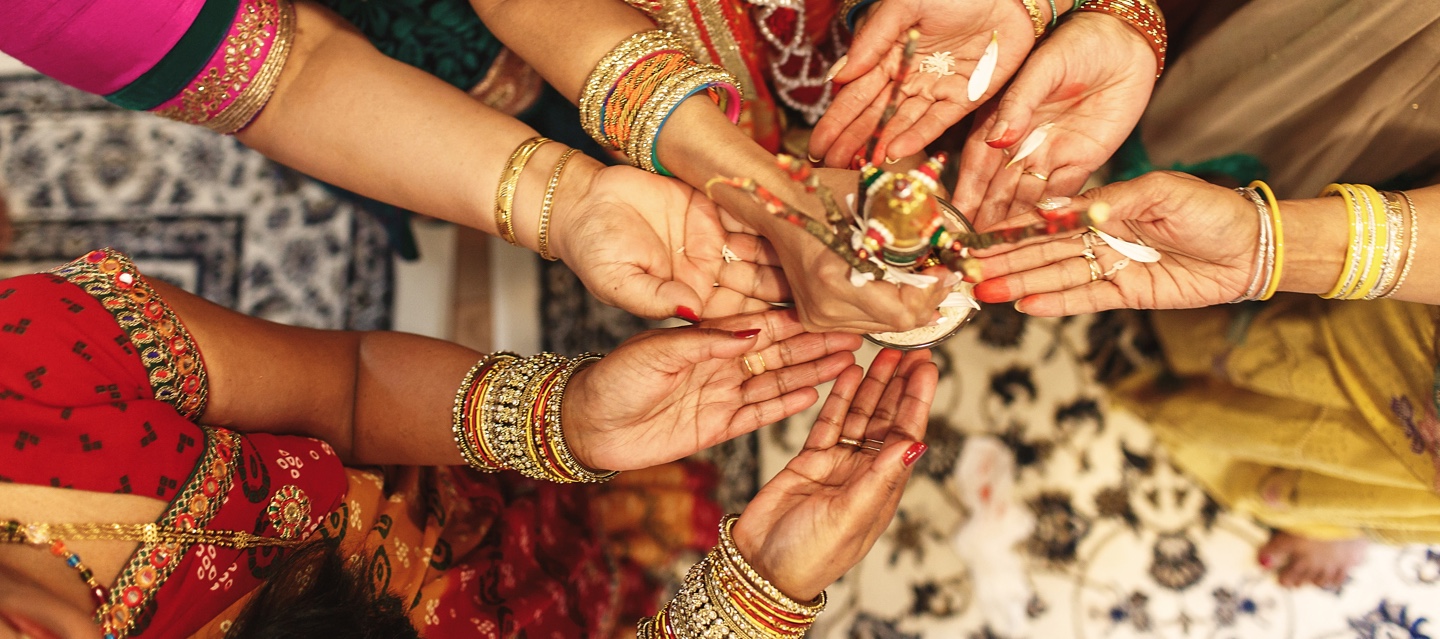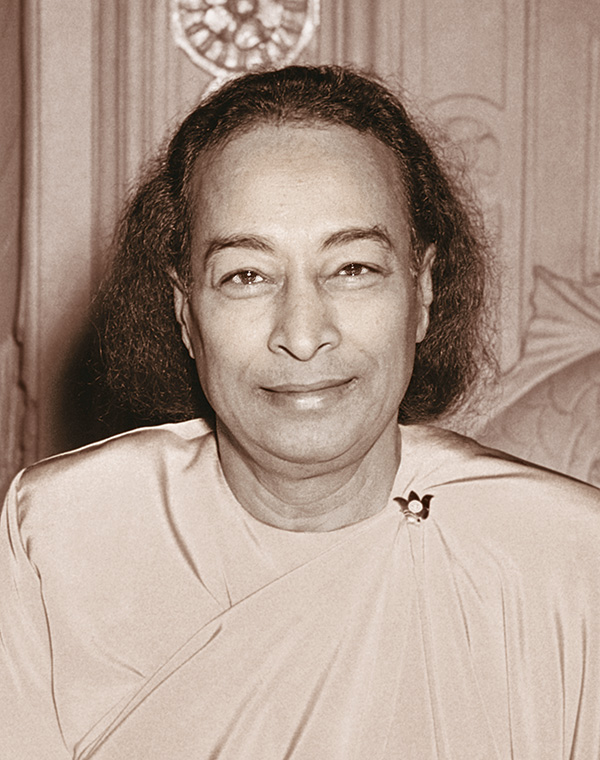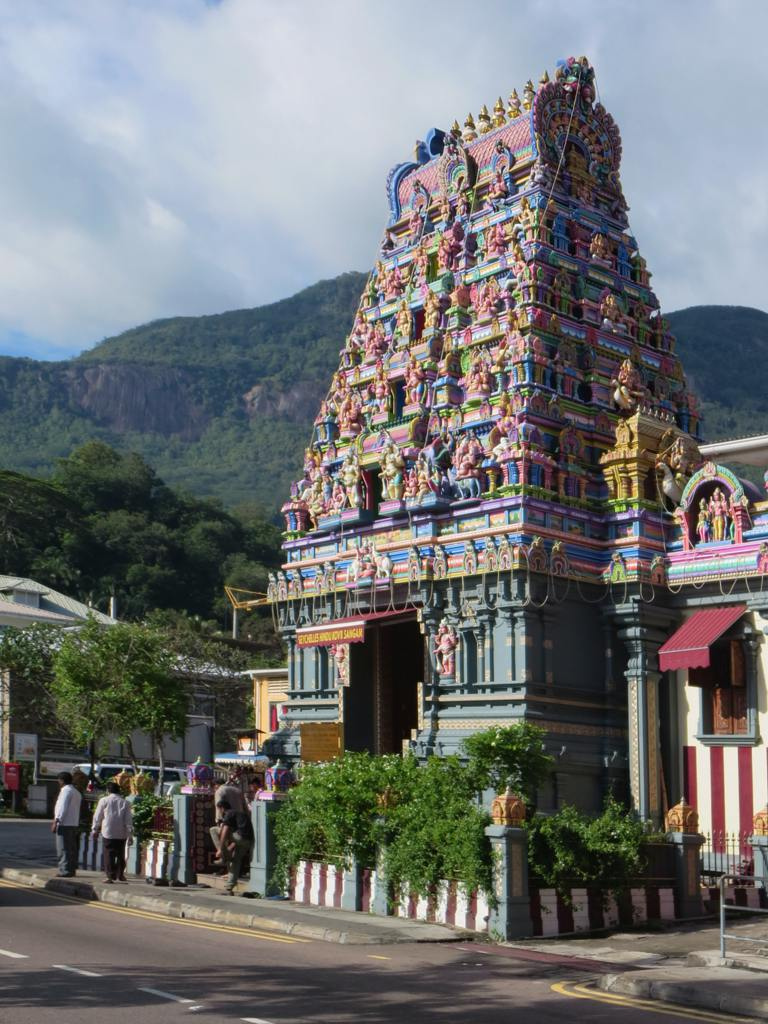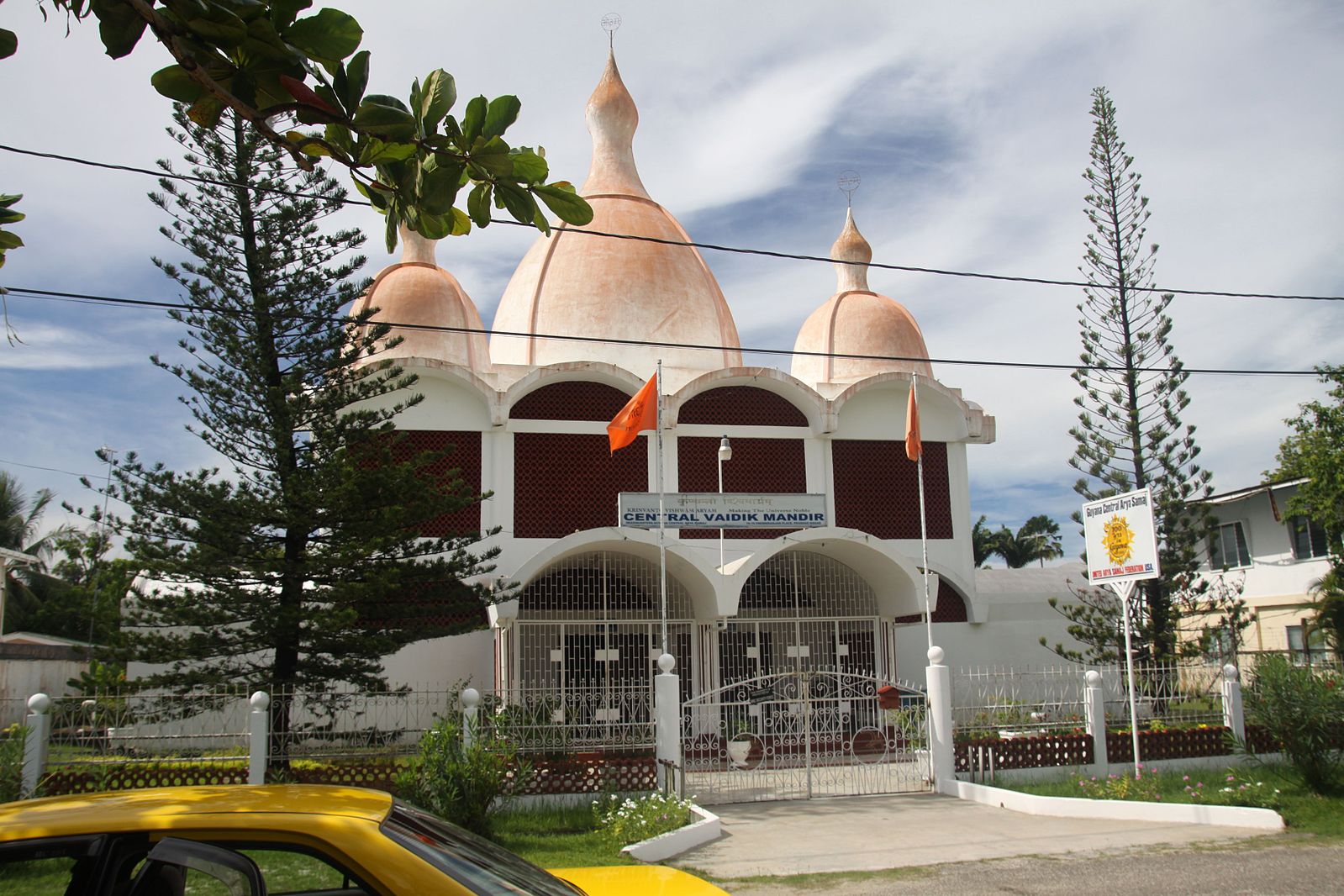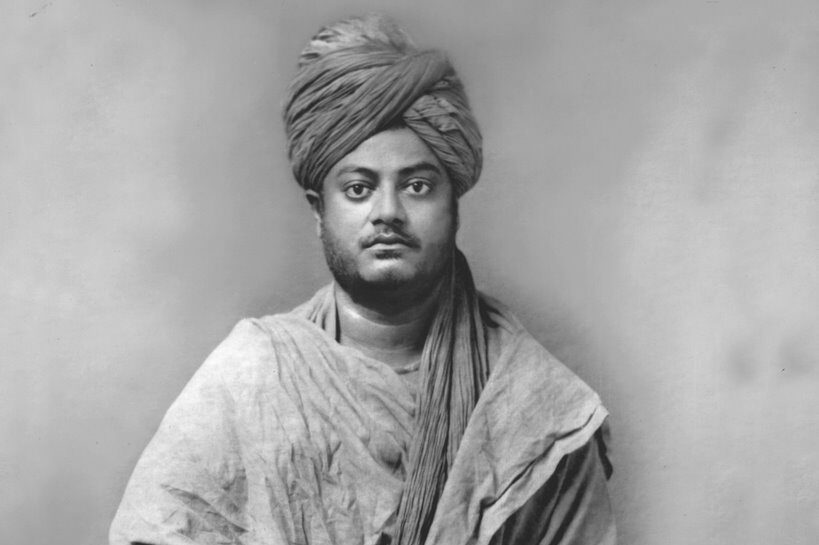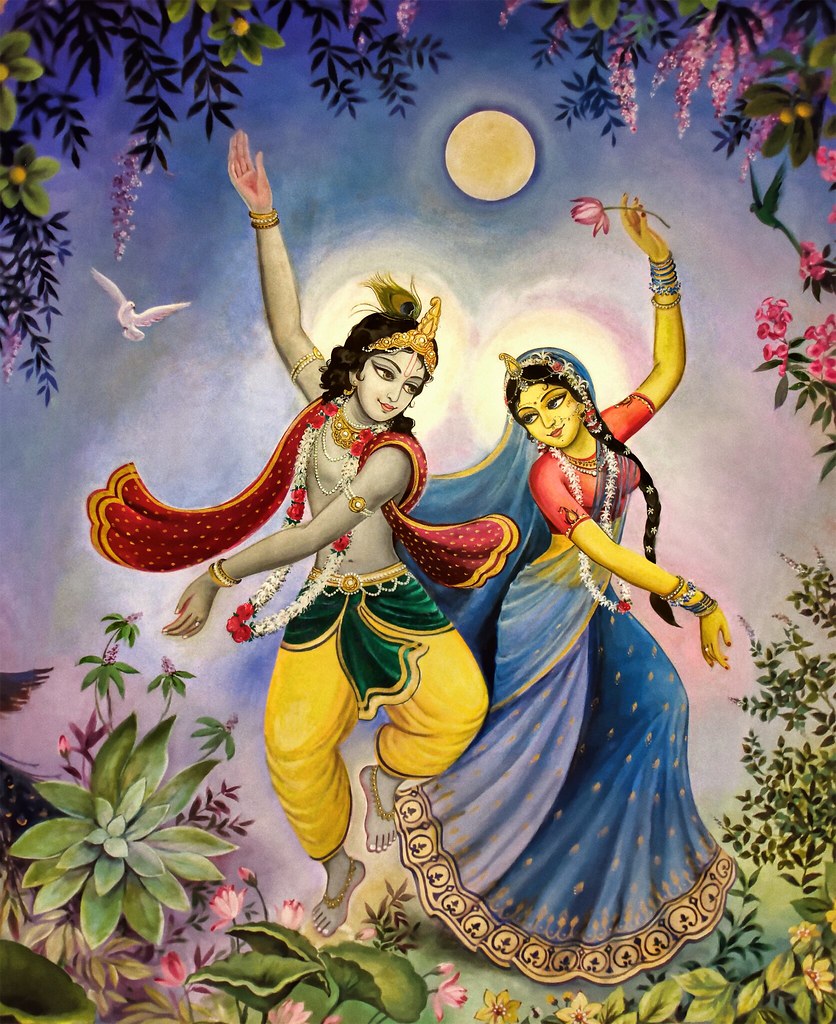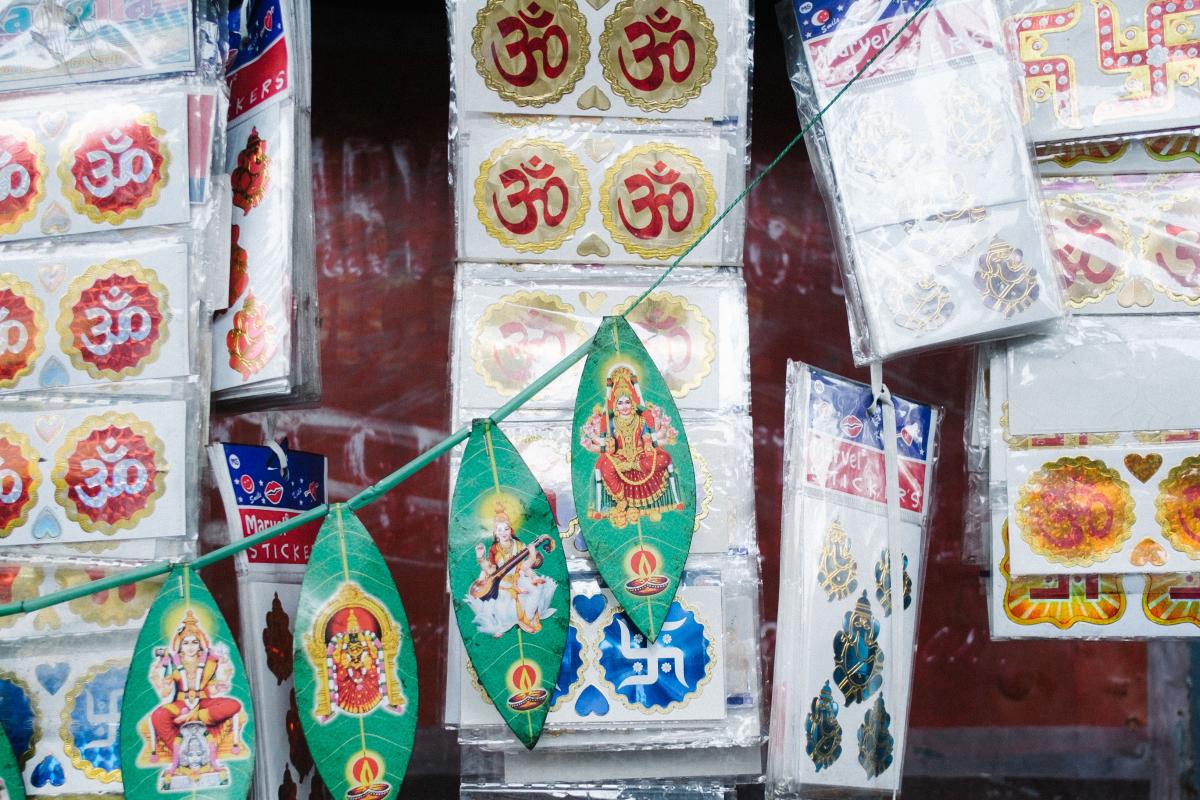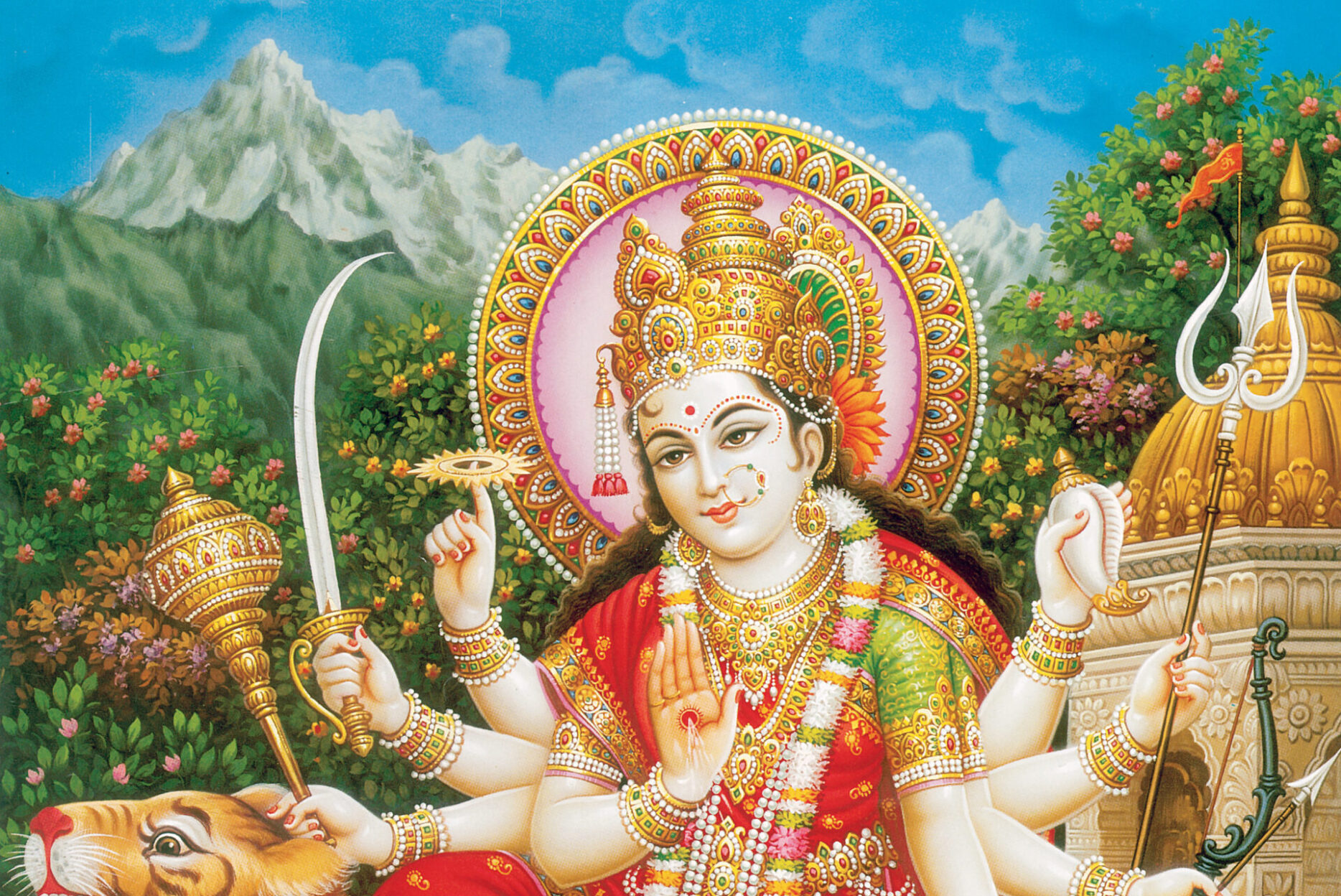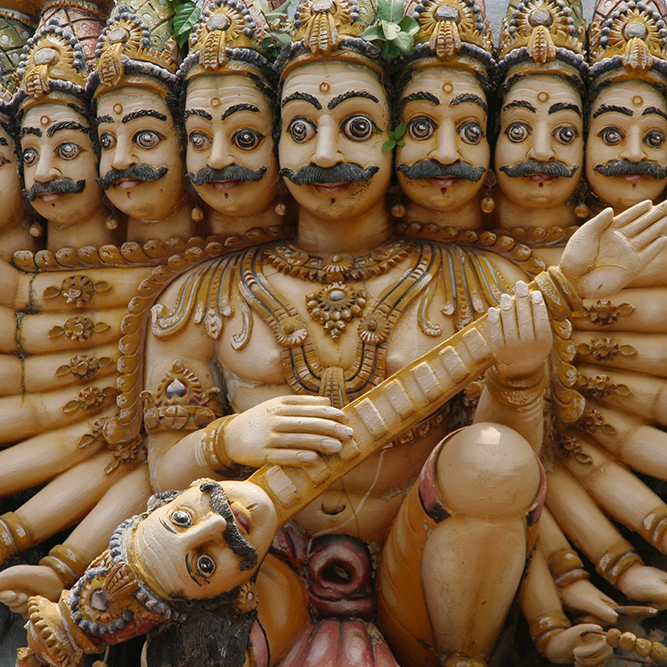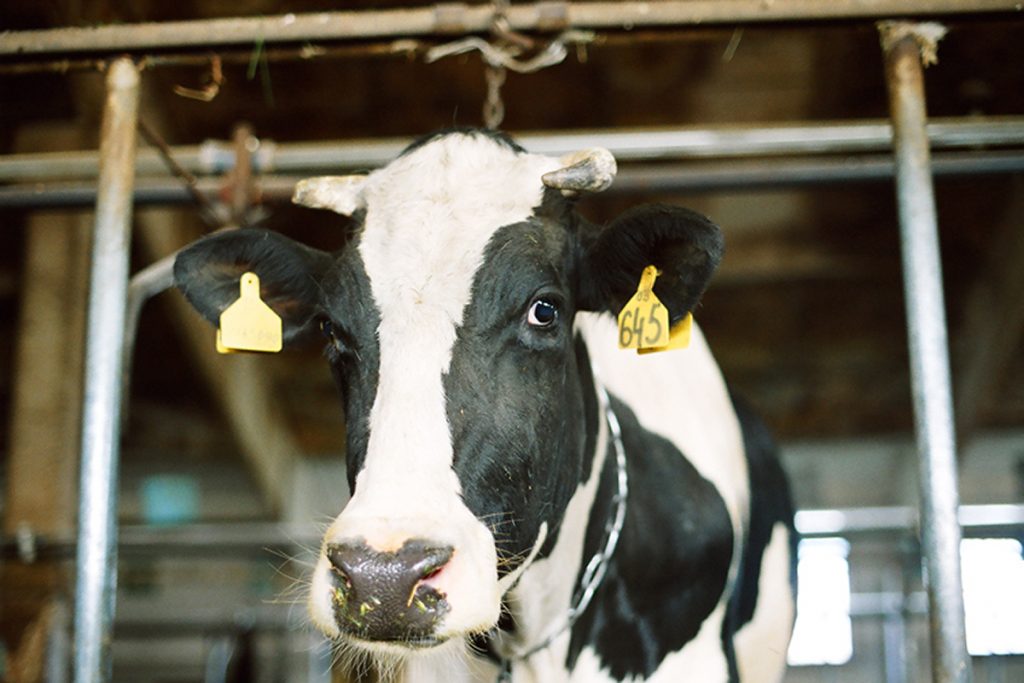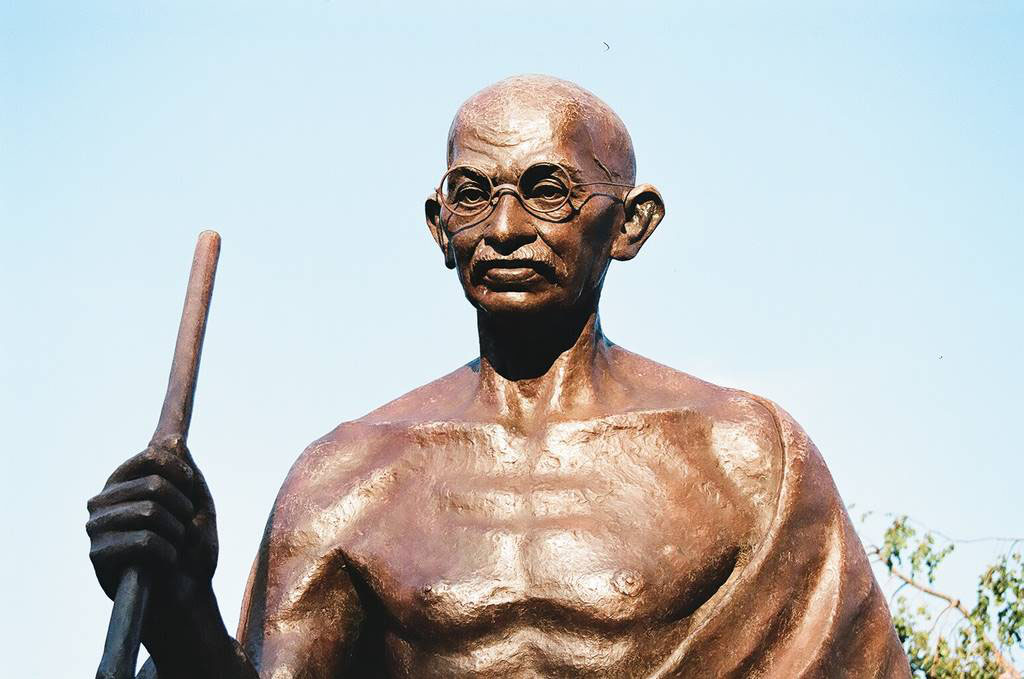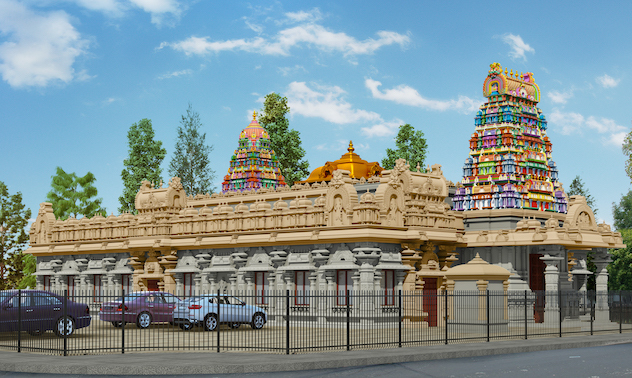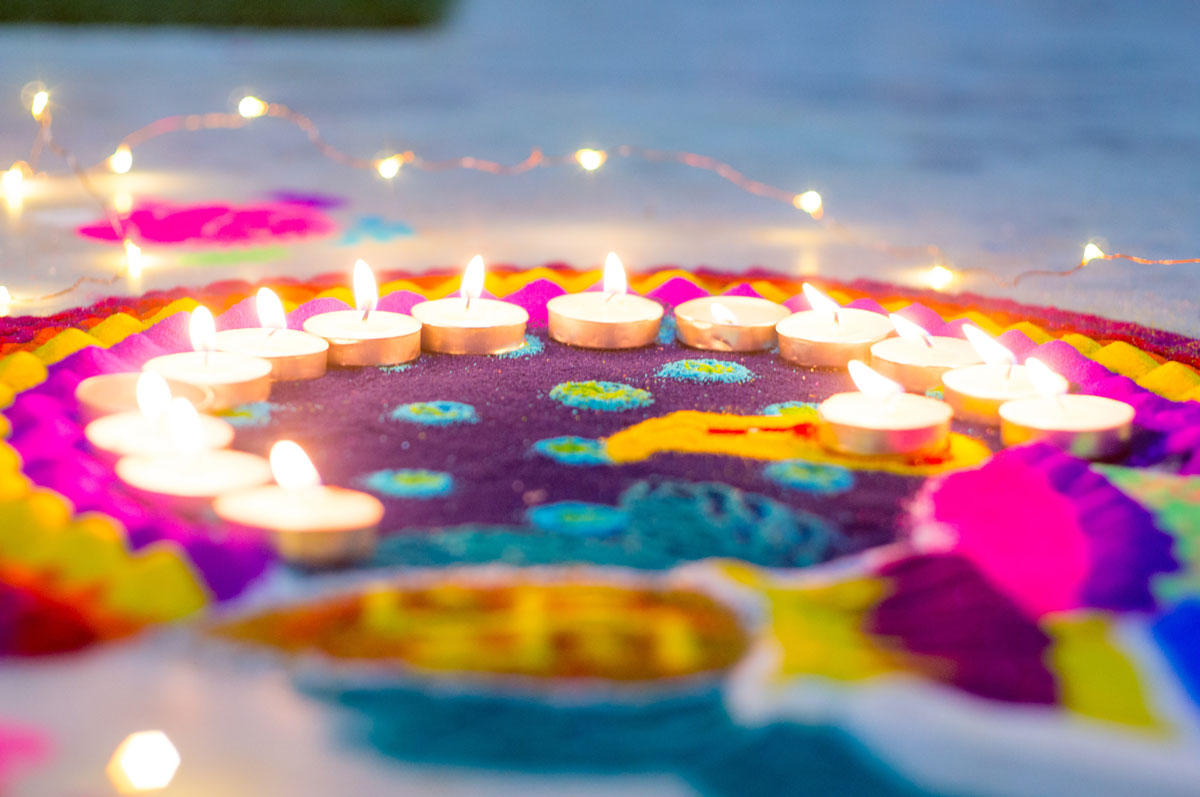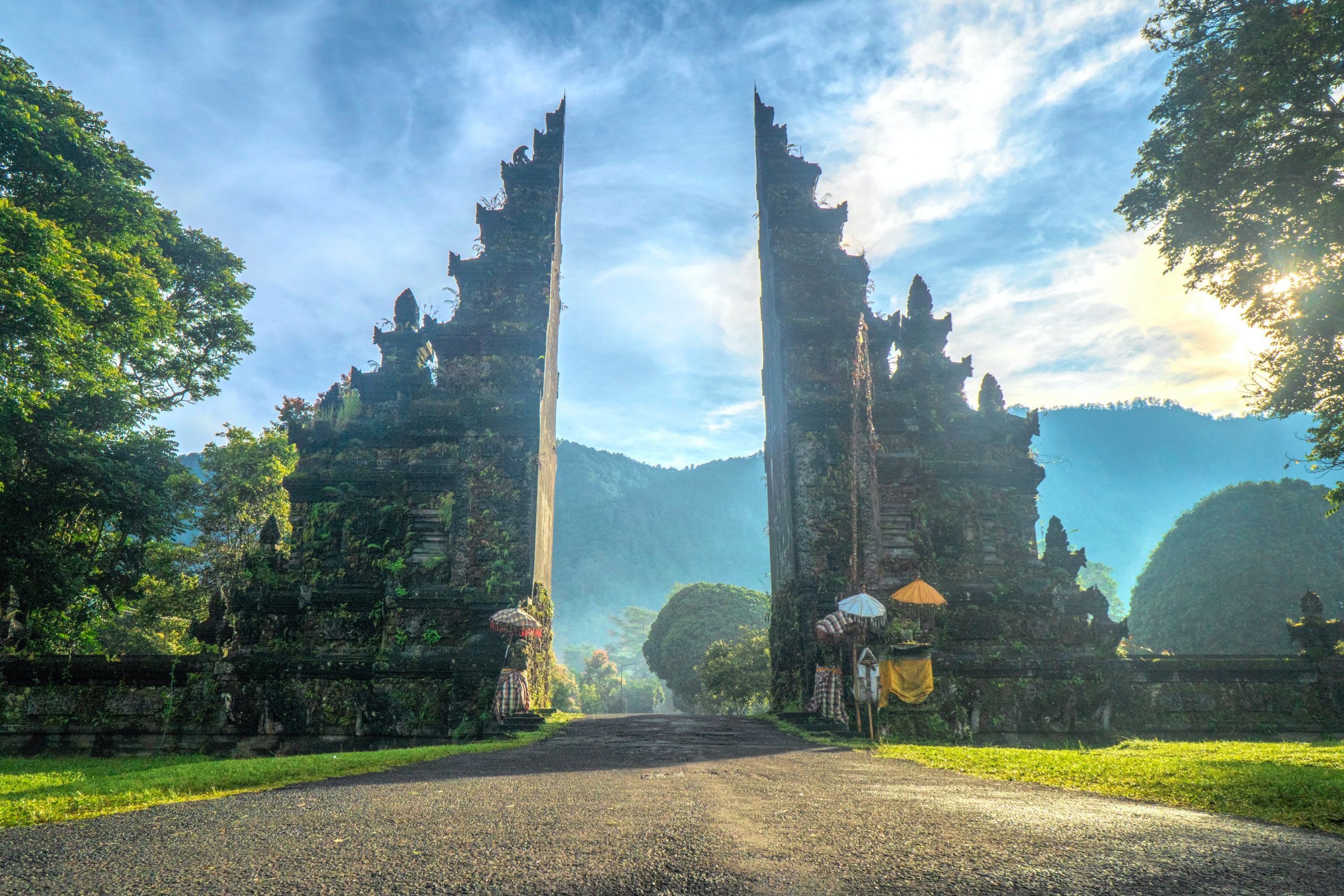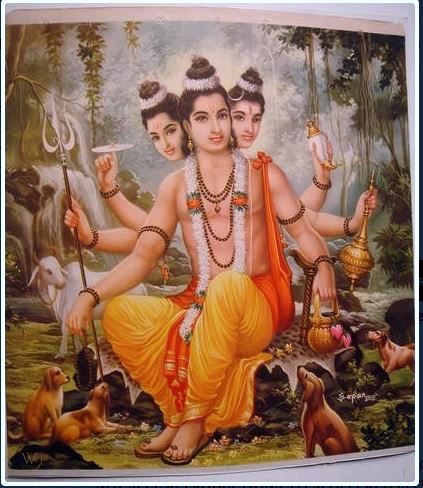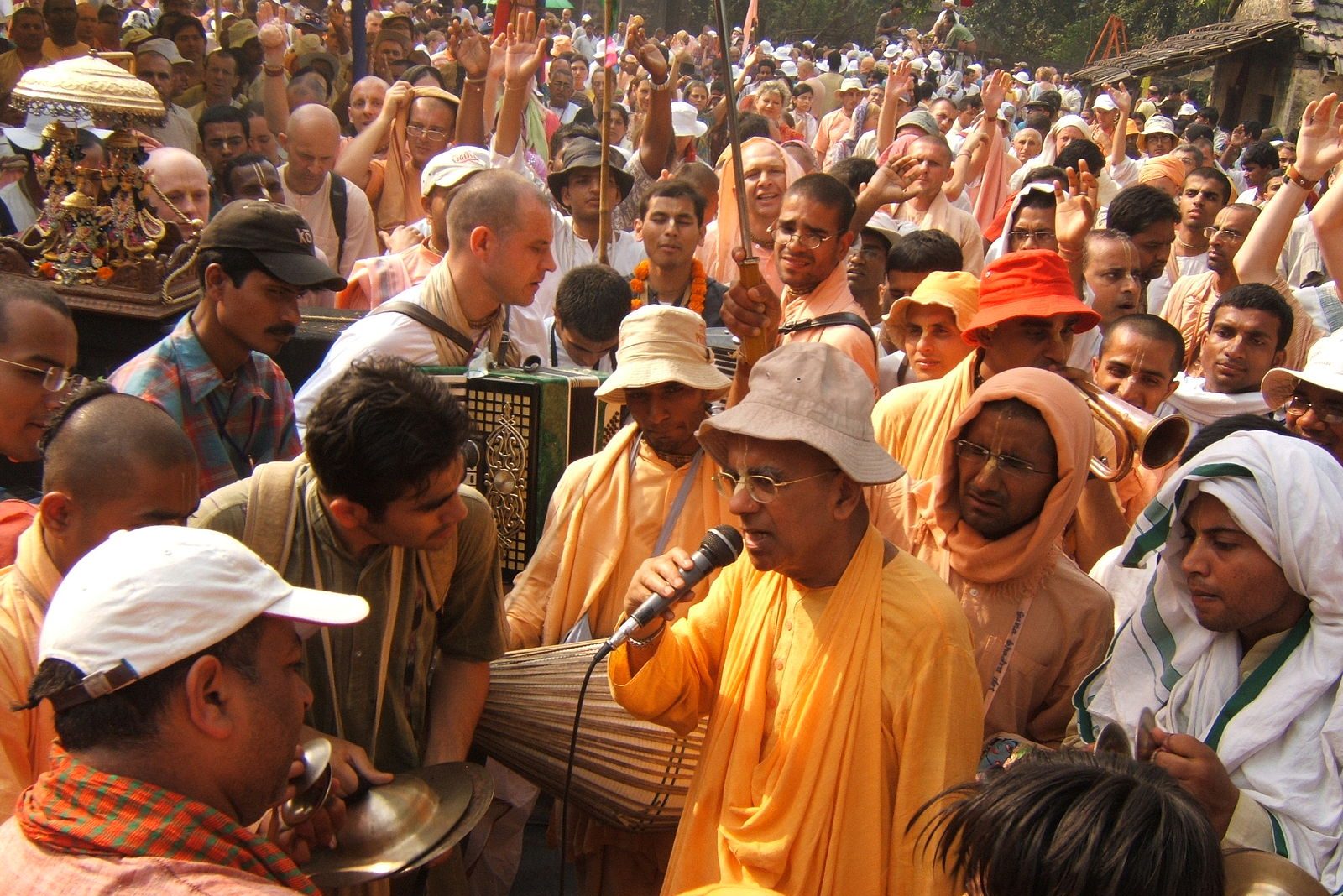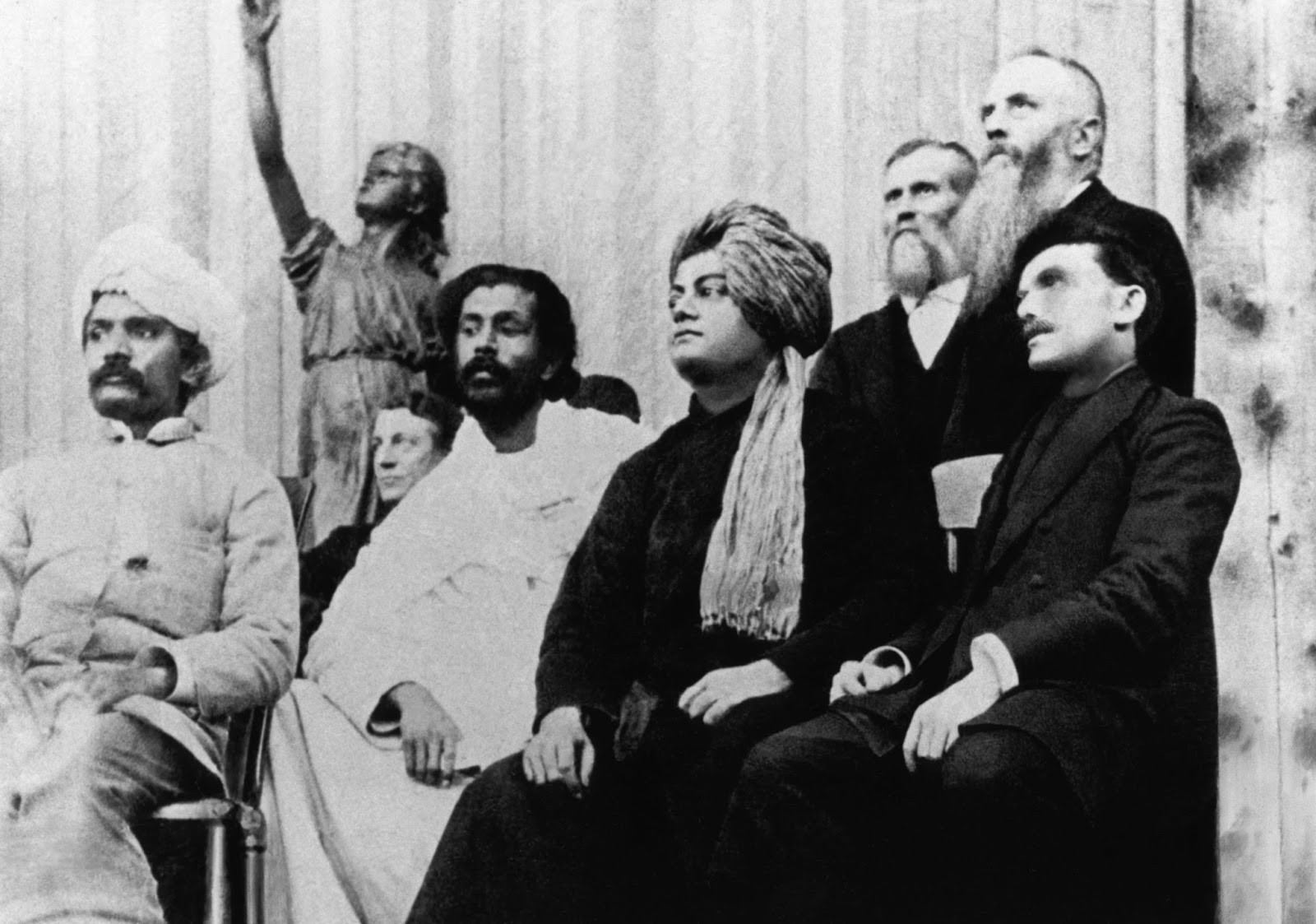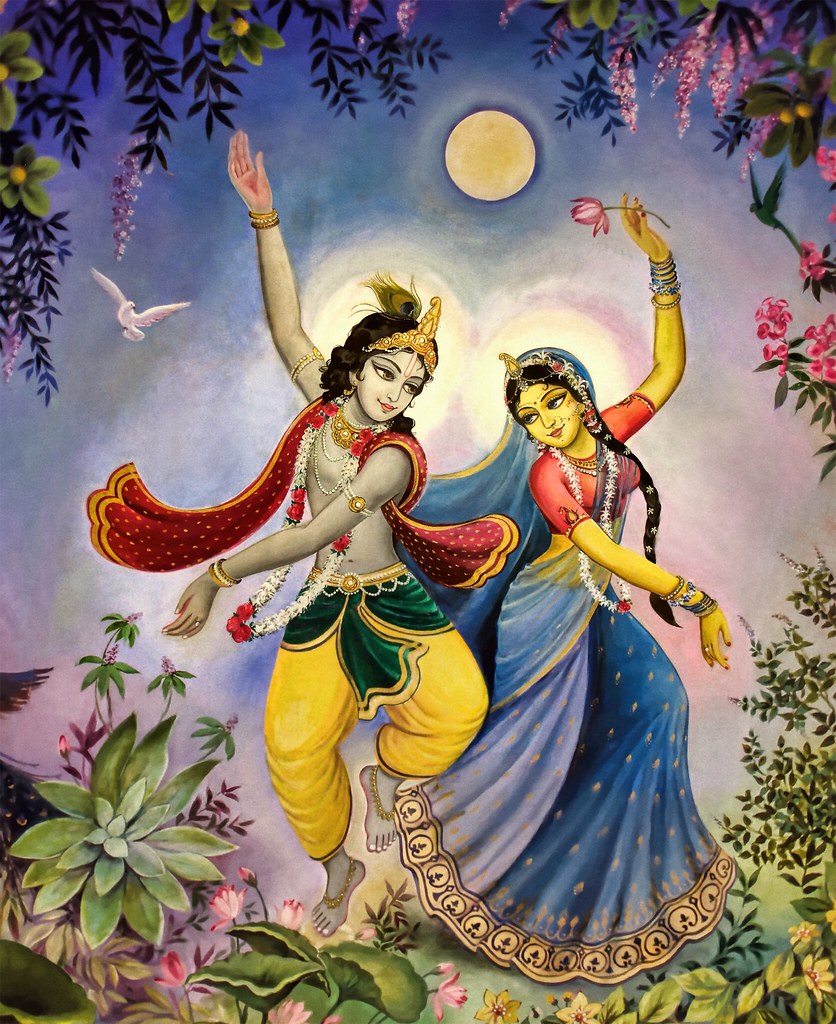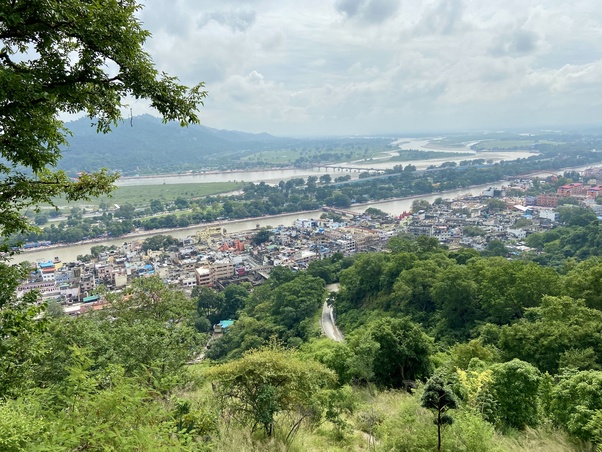

In 2022 I returned to the Himalayas, traveling with some friends. This Himalaya trip, my second, was very centered on the sacred Ganga river. We first joined Her in Haridwar, which we arrived at on October 6, after spending two nights in Delhi. Haridwar is a very pretty town, with the Ganga flowing right through it, nestled between green, forested hills.
There, we stayed in Anandamayi Ma’s Ashram, a familiar and beloved place to me from years earlier, it feels like a home away from home. It’s like a mini Bengal within Uttarakhand. All the people there are truly wonderful, a glowing testament to their guru. They give some of the finest hospitality I have ever received, including some of the best food. The beautiful white spire of Anandamayi Ma’s mahasamadhi tomb can be seen from anywhere in the neighborhood, rising over the buildings.
Anandamayi Ma lived in this ashram for many years, and her body is enshrined here in a white marble tomb. Hindus cremate most dead bodies, but not those of saints who attain mahasamadhi (voluntary departure from the body during a final spiritual practice), who are enshrined like this so their darshan remains. Aarti (fire ceremony) is performed to her shrine every morning and evening.
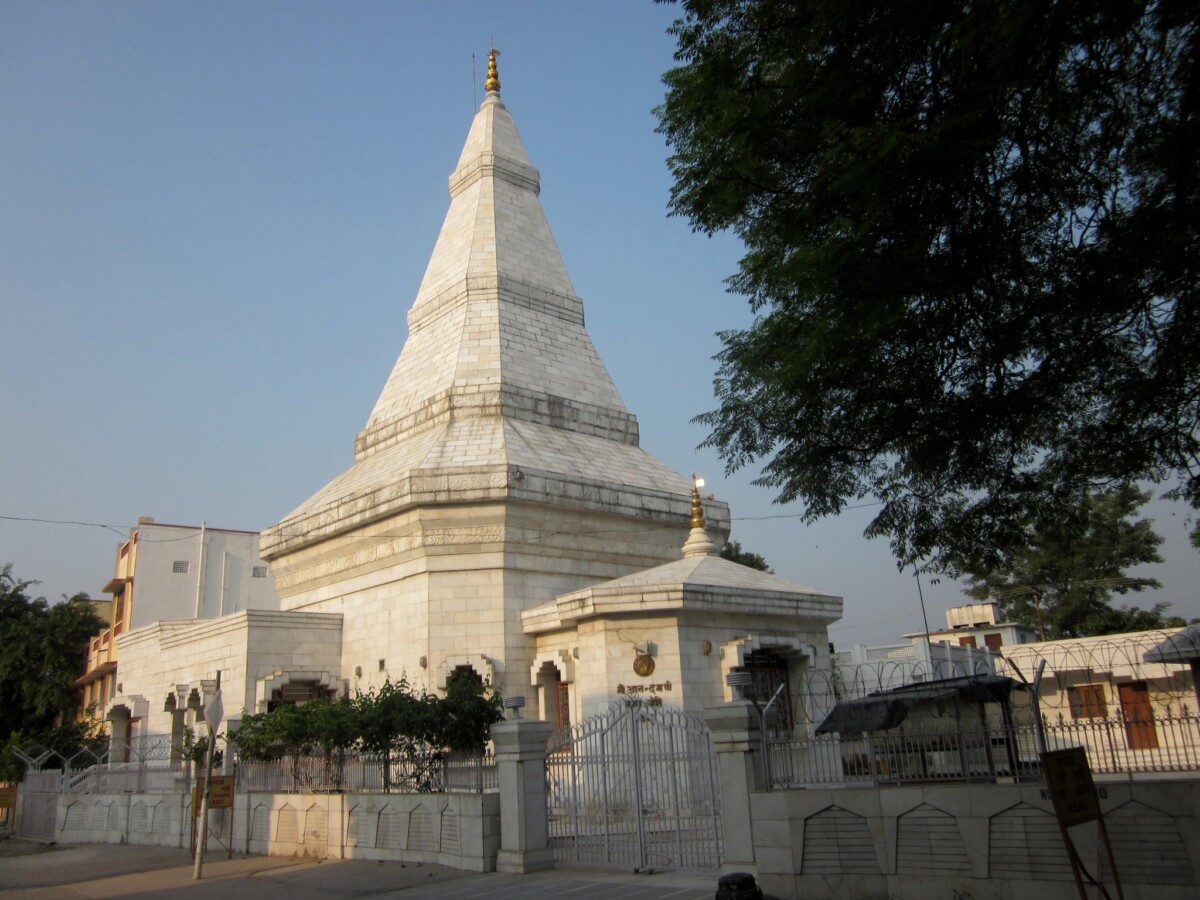
Seeing the Ganga for the first time on this trip
Just a minute’s walk across the street from that ashram is the Ganga river, and the exact spot where I fell in love with Bharat, many years earlier. It’s at Shitala Ghat in Brahm Vihar. It is a Panchavati grove where all the most sacred trees grow tall: pipal, ashoka, bilva, amla, neem, mango, banyan, and others.
It’s a wonderful spot where one can sit or wander in the shade of the grove beside the Ganga for as long as one wishes, watching local women come alone one by one to silently commune with the river, slowly, reverently, taking their time.
Here and there a cow wanders, intrepidly seeking food from pious temple-goers. Lots of monkeys were around.
Upon reaching the river, I took my shirt off, handed my phone to my friend, and walked straight into the Ganga in my pants, I was so eager to be immersed in Her sacred waters again. Her cool Himalayan current felt heavenly in the heat of the day.
Then I sat and meditated for a long time beside the Ganga. Locals came and offered fresh flowers to a Shiva Linga on the ghat (riverside areas) steps.
A local middle-aged woman sat by Ganga under the sacred trees and meditated for about half an hour, then bathed in the river and performed Rudra Abhishek to the Lingam.
Then we went and walked by the Ganga at Birla Ghat. Locals were bathing and washing their clothes in the river and hanging them to dry right there on the ghat.
The whole riverside area was lined with dozens of trees, each one of them individually venerated as a shrine.
It’s a really beautiful and peaceful area, a very pleasant place to stroll, sit and relax.

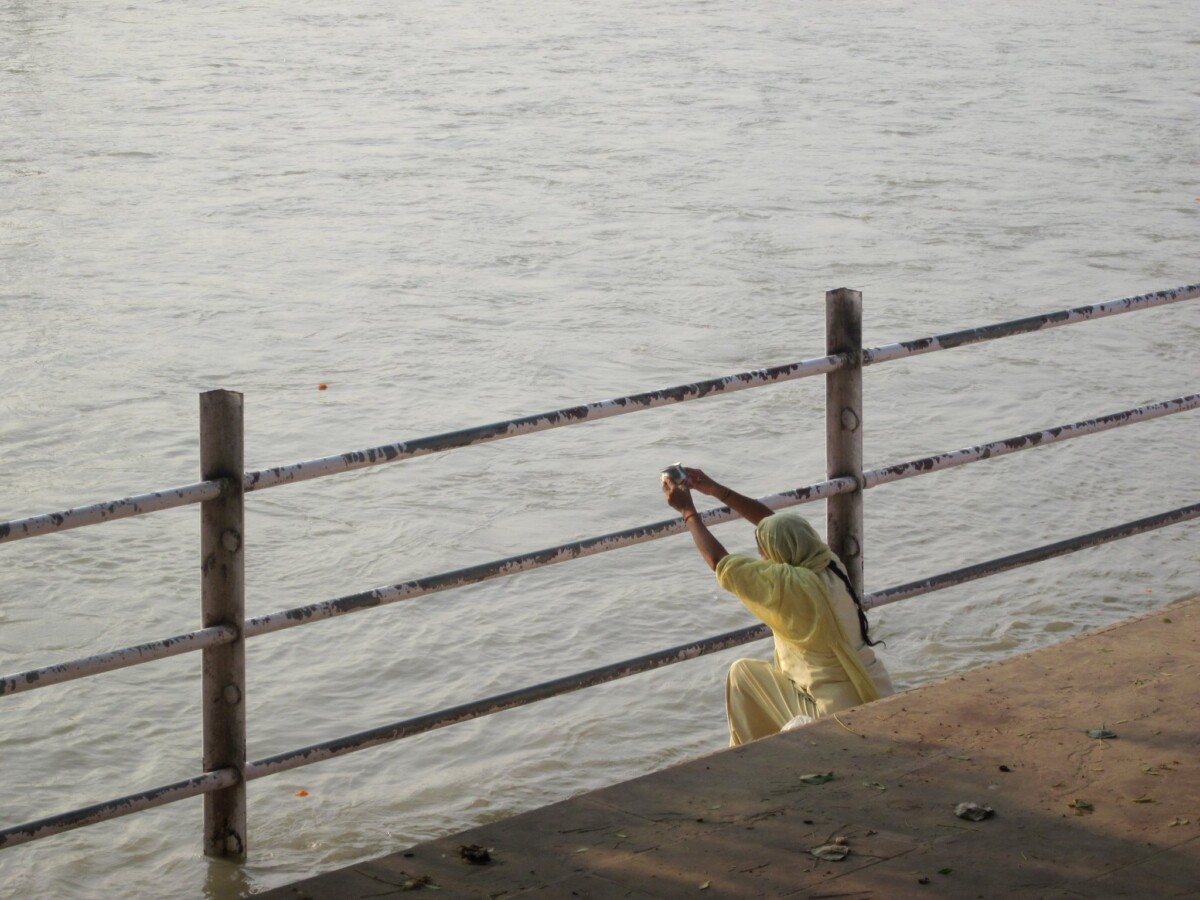
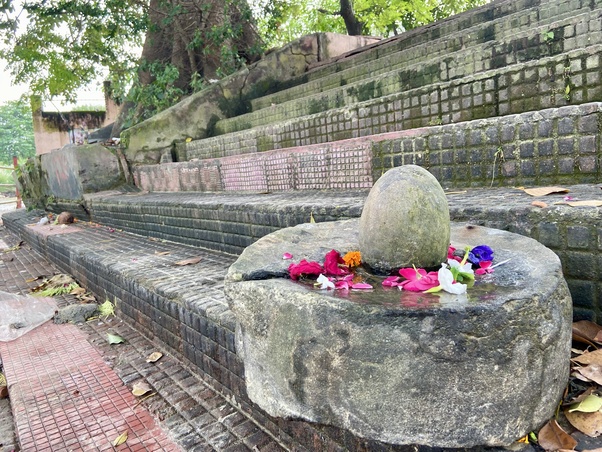
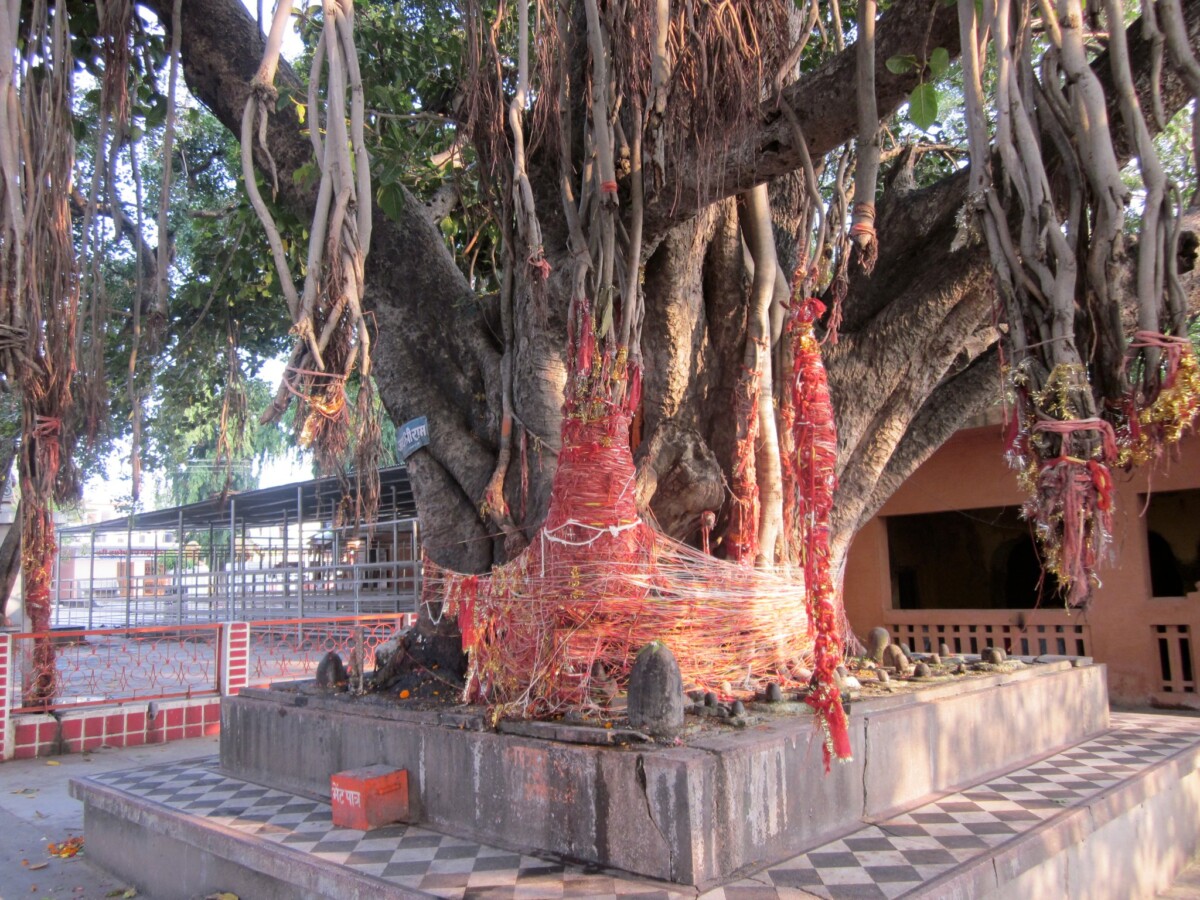
Nature fills the city of Haridwar and the Ganga is ever-present
Haridwar still has its ancient spiritual depth, strong and palpable. The beauty of nature fills the city and has not been overly disturbed or destroyed. Indeed the main religion of Haridwar often seems to be a beautiful and inspiring animism. The central spirituality of Haridwar is reverence of the river Ganga, with murmured chants of “Har Har Gange”. Her banks are lined with dozens of sacred trees each and every one of which is adorned with red strings, has old little shrines at their roots, and receives individual reverence and attention. Any energy-sensitive person can feel the positive energies that abound in Haridwar.
There are many ghats, each with their own spiritual purpose. Gau Ghat is for those who ate meat, to purify their sin by apologizing to the cows there. There is a ghat for Dattatreya, a ghat for Sita, a ghat for Rama, the old historic Har-Ki-Pauri Ghat, etc.
We also visited some temples of Shiva (especially since it was Pradosh day), Sidh Bali Hanuman Temple, and others, and the Har-Ki-Pauri Moti Bazaar, the lavish, vibrant, bustling Pearl Market.
Visiting Chandi Devi Temple
Then we went up to a hilltop temple of Haridwar, on the east side: Chandi Devi Temple. Three temples — Manasa Devi, Maya Devi, and Chandi Devi temples — form the three great Siddha Pithas of Mayapuri, an ancient Shakta name of Haridwar, and together are said to form a great tantric yoni of Shakti through which to enter the Himalayas. They are some of the most spiritually powerful temples I’ve experienced in all of Bharat. Chandi Devi even more than Manasa’s temple is really nestled up in the forested hills, full of birdsong. Beautiful waterfalls plunged into forest pools.
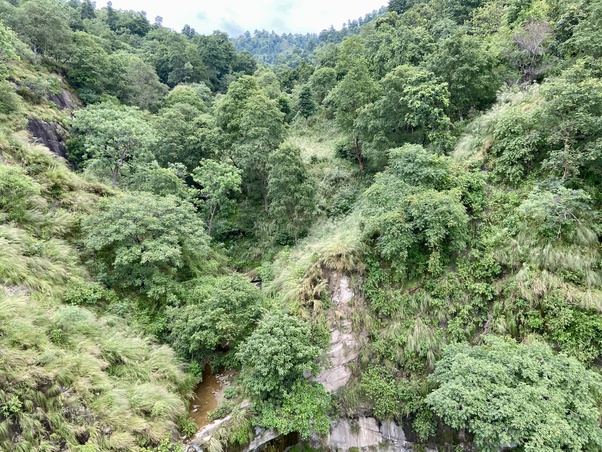
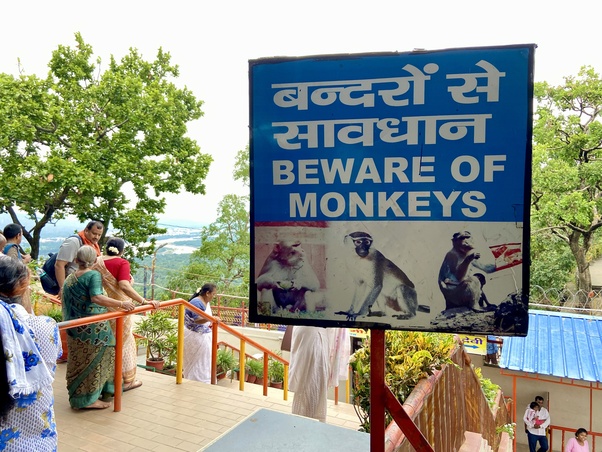
They teach ten occult mantras there: a mantra for the veneration of Adi Shakti Maa Kali to overcome obstacles like Kala Sarp and the fear of death; a mantra for the veneration of Tara for increasing intellectual ability and getting a good education; a mantra for the veneration of Maa Tripura Sundari for personality development and a healthy and beautiful body; a mantra for the veneration of Maa Bhuvaneshwari for getting land, vehicles, and all opulences; a mantra to pray to Chinnamasta for success in career, promotion, or employment; a mantra to venerate Tripura Bhairavi to get a beautiful and virtuous husband or wife and a peaceful marriage; a mantra to venerate Dhumavati to get rid of unknown fears, increased obstacles, etc.; a mantra to venerate Baglamukhi for success in competitive exams and legal disputes; a mantra to venerate Adi Shakti Matangi for having children and to get rid of natural disturbances; and a mantra to venerate Maa Kamala for wealth, prosperity, and liberation from poverty.
Chandi Devi Temple was my favorite place in Haridwar. Some of my best experiences of divine darshan in Haridwar were in very crowded, busy temples like Manasa Devi and Chandi Devi, but the crowds are real bhaktas. The temples of Haridwar are full of a calmness and tranquility that can be lacking in some more hectic and over-busy temples in some other cities. Yet they are not sparsely attended; far from it, in Manasa Devi and Chandi Devi Temples I was pressed shoulder-to-shoulder in the crowd. Yet somehow even then, especially at Chandi Devi, the spirit of tranquility moved through the crowd like a soothing breath. The devotional fervor of the crowds is palpable and inspiring.
The clouds broke for us, and we watched a beautiful sunset from Chandi Devi Temple on the high hilltop.
Then we went down and attended evening Ganga Aarti at Har-Ki-Pauri, a blissful and lovely ceremony. Every night the river is lit up with floating diya lights, and sacred bells and chants ring out across the water.
Daksheswara Mahadev Temple
On the morning of Oct 8, a friend paid a professional priest to do a private full Shodashopachara Ganesha Puja for us in his family temple to bless our pilgrimage.
Then we returned to Mayapur to visit Daksheswara Mahadev Temple, also called Shri Deveshwar Mahadev Temple, an ancient Pauranik Shiva temple. It is built on the site of the home and tapasya-place of Maharaja Daksha Prajapati, and the place of both the birth and death of Sati, first wife of Shiva. It is a powerful Shakti Pitha, not because any piece of Sati’s body fell there, but because it is where all the pieces came from; it is the spot where Her corpse was shredded and scattered across the Indian subcontinent. This art was appropriately painted on the compound’s outer gate:
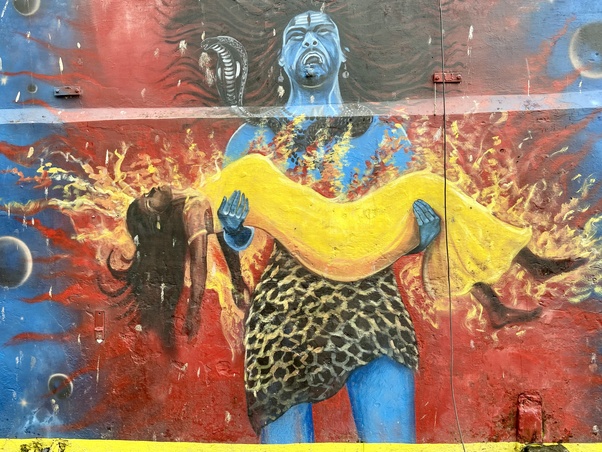
After his death and resurrection with a goat’s head, Daksha Prajapati bowed before Lord Shiva and requested Him to stay here forever. Lord Shiva assured Daksha that an Ansha of Him will be present in this spot, particularly in the month of Shravana.
The temple courtyard has several big sacred trees, one of which in particular is very old and famous.
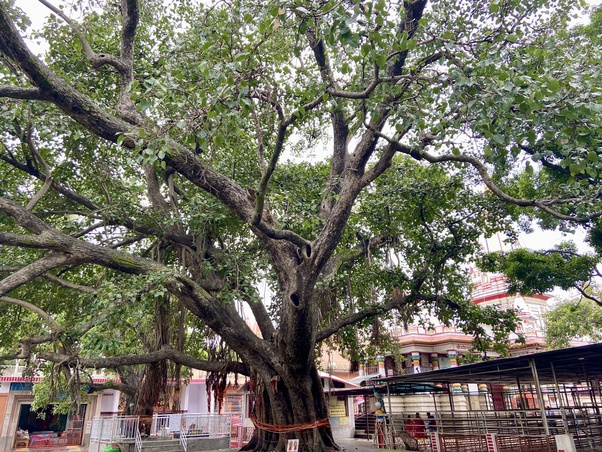
That tree has some smaller Naga shrines nearby it. We sat there and meditated for some time. The tree palpably helped my meditation, raising my awareness with an upward energy. There are really endless gems in Haridwar. People were feeding grain offerings to some very cute chipmunks at the base of some of the other sacred trees.
The temple itself is large and beautiful.
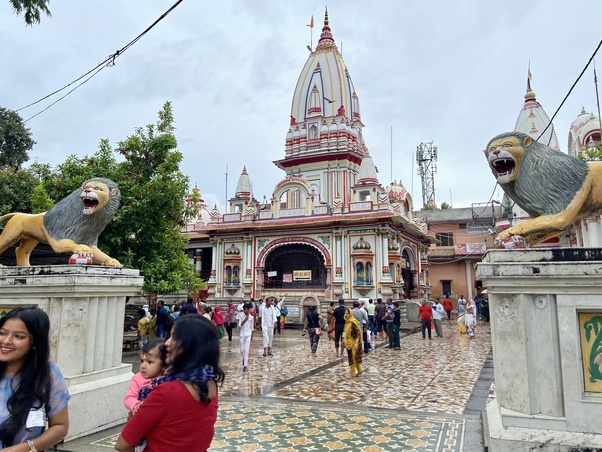
When we came out the main north entrance after our Darshan, there is across the walkway a small temple called Omkareshwara, with a large Shiva Linga. I bowed deeply there, placed my forehead on the Linga, and just let go and felt a deep, quiet joy thrumming through me, like a primal pulse.
Next we visited Siddhapitha Shri Dakshina Kali Temple, and then Bilvkeshwar Mahadev Temple. Bilvkeshwar Mahadev Temple is up in the forested Himalayan hills outside the city.
Haridwar’s sacred forests and the famous Ganga aarti
Behind the temple is a shreevan, a sacred forest where hunting is forbidden and Ayurvedic medicines are cultivated. This one is a Bilva forest full of tree spirits:

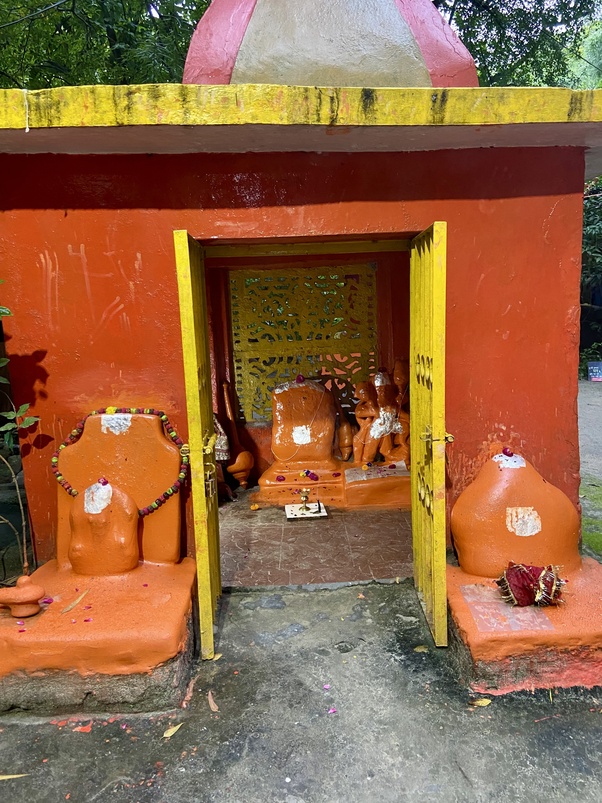
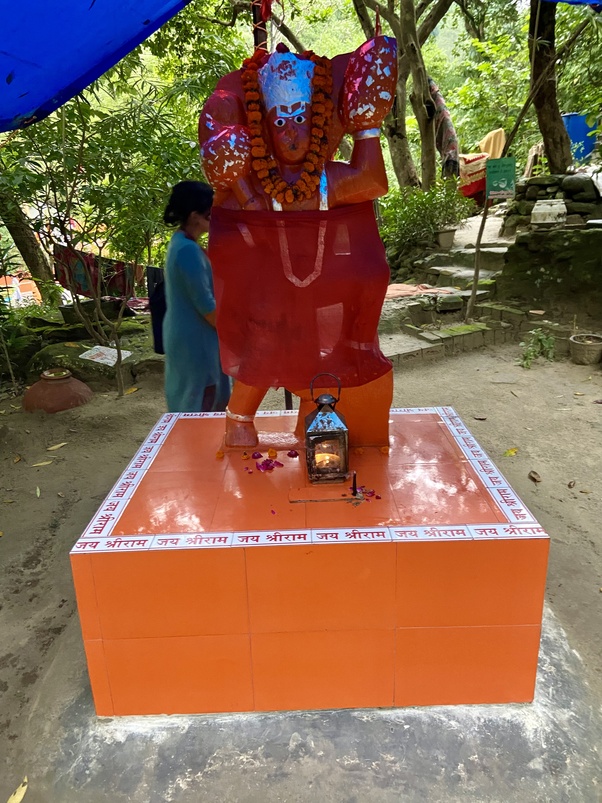
Bilvkeshwar Mahadev Temple itself is dedicated to Shiva, but Hanuman seemed to be the primary deity of the sacred forest behind it, appearing in many shrines accompanied by more amorphous forest spirits.
Forestry restoration work was in progress to expand the grove. It was heartening to see an ancient forest growing rather than shrinking in today’s age. The people in Uttarakhand have really been doing outstanding forestry work in the last couple decades. They had also built wooden houses for birds on some of the trees. The grove was beautiful and palpably spiritual.
Deep back in the grove were caves where sadhus dwell, and sacred waters flow. Behind that, the shreevan becomes a tapovan, a forest area reserved for tapas, intense spiritual practices, by saints and rishis. A tapovan is also considered a raksha, a sanctuary for plants and animals, as humans are not allowed to enter them except for saints or rishis who go there exclusively for the purpose of practicing tapas.
That evening we attended the great Ganga Aarti at Har-Ki-Pauri again, a crowded spectacle. Then we attended another, slightly later evening aarti at Vaishno Devi Temple, which had a nicely inclusive and participatory aarti.
I really love Haridwar. If I were to move to Bharat for a longer stay rather than just traveling, Haridwar would be one of my topmost considerations to settle for some time. I feel at home there. More than just home, it feels like heaven. It truly does justice to its name as a gateway to the Divine, and I think it deserves its place on the list of the Sapta Puri, the seven most sacred cities in Hindu Dharma. It feels very safe too. I even saw many women walking alone, including at night, not even glancing my way but looking relaxed and comfortable.
On the morning of Oct 9 we visited the Sri Yantra Temple in Vishwakalyan, where various Divine families are venerated like Shiva-Parvati-Ganesha, Ganesha-Buddhi-Siddhi, and Lakshmi-Narayana. They specialize in Shri Sukta Puja.
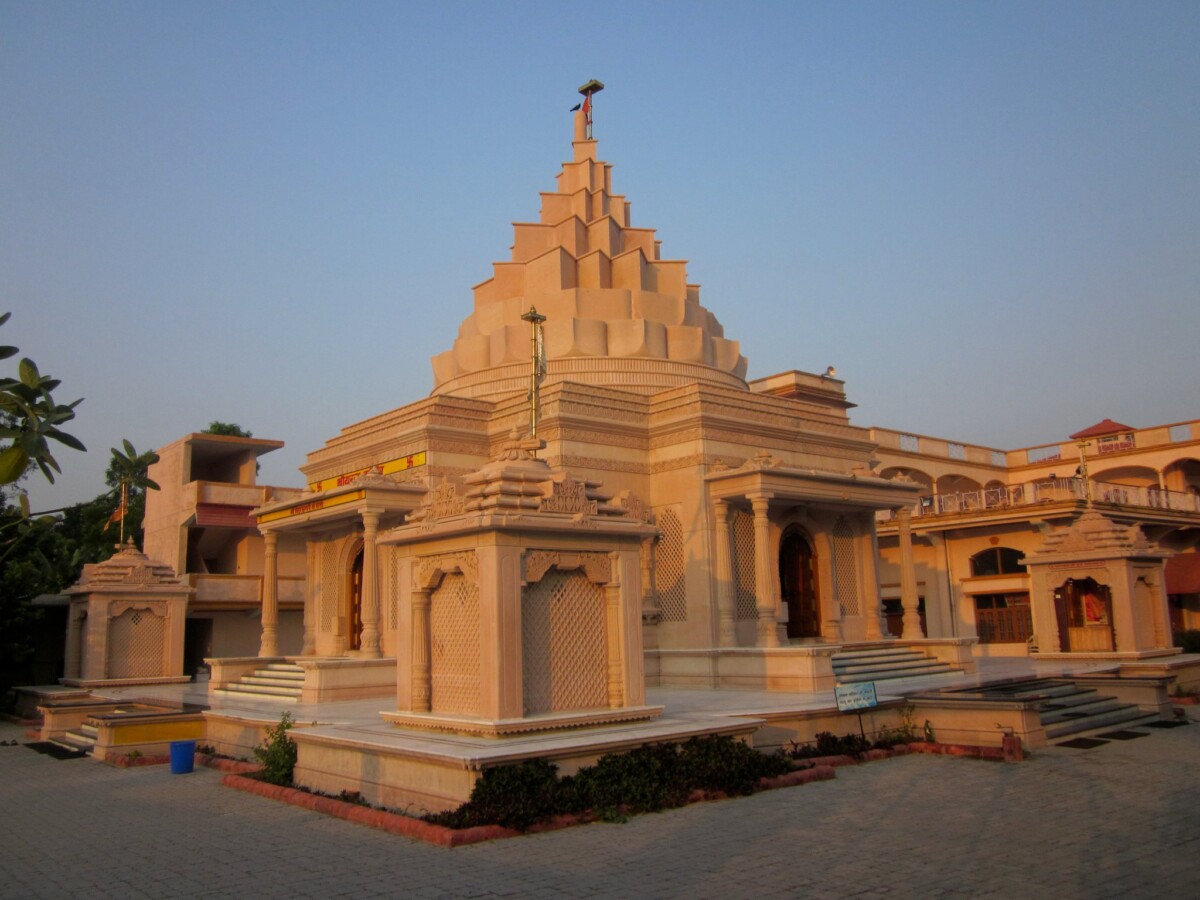
A note: Though I undertook this trip in the autumn of 2022, information on the temples and places visited presented at the links in this article are current as of mid-2025. Logistical details of getting between places can change quickly, however, and individuals should verify the latest information from other sources.
All photos in this article © Devala Rees.


